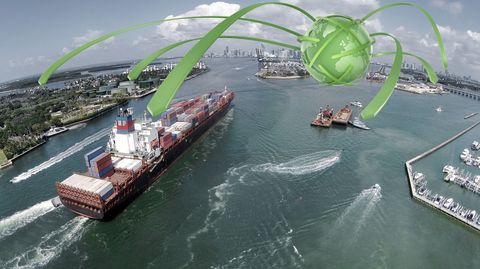Businesses that have been monitoring global trade performance over the last year or so have largely been confronted with bad news, as import and export trends have proven extremely sluggish for some time now.
The recovery from the post-2009 global economic downturn has proven slower than many had hoped, with even markets such as China - a reliable source of growth for many years - proving susceptible to the slump. In the last few weeks, both the World Trade Organization (WTO) and the Organisation for Economic Co-operation and Development (OECD) have published new market reports that have suggested the recent negative trends are likely to continue.
With both of these global organizations predicting further slowdowns, companies may need to adjust their expectations and trade strategies accordingly, while considering the measures that may be needed to change the current narrative in the longer term.
Persistently underwhelming trade figures
According to the WTO's data, world trade is set to grow more slowly than expected in 2016, with the predicted growth rate of 1.7 per cent falling well below the April forecast of 2.8 per cent. The forecast for 2017 has also been revised downwards to a range of 1.8 per cent to 3.1 per cent, down from 3.6 per cent previously. Meanwhile, global GDP growth of 2.2 per cent has been estimated for 2016, marking the slowest pace of trade and output growth since the financial crisis.
This depressed performance can be attributed to a sharper-than-expected decline in merchandise trade volumes in the first quarter of the year of 1.1 per cent, followed by only a 0.3 per cent improvement in Q2, which was less than anticipated. Poor GDP and trade growth in developing economies such as China and Brazil is being compounded by the slowdown seen in North America, which had the strongest import growth of any region in 2014-15, but has lost steam since.
Additionally, the relationship between trade and GDP growth has weakened considerably. Typically, trade has grown 1.5 times faster than GDP, rising to a 2:1 ratio during the 1990s; however, the ratio has slipped towards 1:1 in recent years, with 2016 shaping up to be the first time in 15 years that it will fall below this.
The OECD's data backs up these discouraging forecasts, indicating that the global economy will grow by 2.9 per cent this year and 3.2 per cent in 2017 - well below long-run averages of around 3.75 per cent.
With China rebalancing its economy and the development of global value chains going into reverse in some cases, the OECD warned that this could signal "permanently lower trade growth".
OECD chief economist Catherine Mann explained: "The marked slowdown in world trade underlines concerns about the robustness of the economy and the difficulties in exiting the low-growth trap. While weak demand is surely playing a role in the trade slowdown, a lack of political support for trade policies whose benefits could be widely shared is of deep concern."
What is to be done?
Both the WTO and OECD have expressed concerns that these negative trends are coinciding with a rise in populist anti-free trade rhetoric, which could potentially hamper efforts to combat the throwdown through policymaking.
Despite this, a handful of trade-related indicators have improved - including export orders and container port throughput - but both organizations are adamant that government action is needed to counteract the anti-trade narrative and stimulate growth.
The OECD called for lower interest rates to facilitate further investment in human capital and physical infrastructure to promote short-term demand and long-term output, while measures to boost trade directly could include commitments to oppose new protectionist measures, abolish existing ones and tackle other obstacles to trade and investment.
WTO director-general Roberto Azevedo concurred, saying: "While the benefits of trade are clear, it is also clear that they need to be shared more widely. We should seek to build a more inclusive trading system that goes further to support poorer countries to take part and benefit, as well as entrepreneurs, small companies and marginalized groups in all economies.
"This is a moment to heed the lessons of history and re-commit to openness in trade, which can help to spur economic growth."






